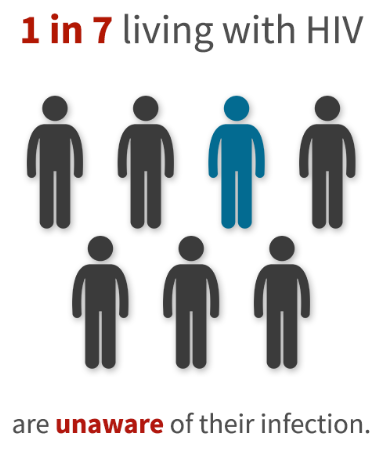Letters from the Director: "Do It Your Way" on This Year's HIV Testing Day
On June 27 each year, NIH joins other federal agencies, community-based organizations, stakeholders, and health advocates in the observance of a key awareness day in the fight against HIV. 
Since 1995, National HIV Testing Day (NHTD) has been an opportunity to highlight the critical importance of HIV testing and to encourage people of all backgrounds and sexual orientations to get tested for HIV, know their status, and seek care and treatment services.
According to the Centers for Disease Control and Prevention (CDC) there are about 1.1 million people in the United States with HIV, and 1 in 7 are unaware they are infected1. Unfortunately, those who are unaware of their HIV status are 3.5 times more likely to transmit the virus sexually compared to those who know their HIV status2. A recent report showed that nearly 40% of new HIV transmissions in 2016 came from people who didn’t know they had HIV.
The good news is that significant advances in HIV detection and treatment have made HIV a manageable chronic disease. HIV is no longer the dreadful life-ending virus that took so many lives at the beginning of the pandemic. Anyone with HIV, however, should learn their status as soon as possible to start lifesaving treatment immediately. Early diagnosis and treatment are critical for HIV management. For example, current anti-retroviral therapy (ART) is very effective if started early before the onset of symptoms. The sooner a person starts ART, the less likely he or she is to become sick with opportunistic infections or AIDS. ART effectively helps patients live longer, healthier lives, and nearly full lifespans.
This year’s NHTD theme, "Doing It My Way," is a call to action for people to get tested in a way that is comfortable for them. Testing for HIV should no longer be a taboo and there are different ways to know one’s status. Anyone can be tested by their health care provider or find a testing site offering free, fast, and confidential HIV tests. Rapid testing kits for home use are also available.
Whichever way you choose to be tested for HIV, knowing your status should be your health priority this summer and is an important step in protecting yourself and your loved ones.
Maureen M. Goodenow, Ph.D.
Director, Office of AIDS Research and
NIH Associate Director of AIDS Research
Office of the NIH Director
1 HIV.gov. Fast Facts.” https://www.hiv.gov/hiv-basics/overview/data-and-trends/statistics
2 U.S. National Library of Medicine, National Institutes of Health. Epidemiology of Human Immunodeficiency Virus in the U.S. https://www.ncbi.nlm.nih.gov/pmc/articles/PMC1932758/
This page last reviewed on December 10, 2024

